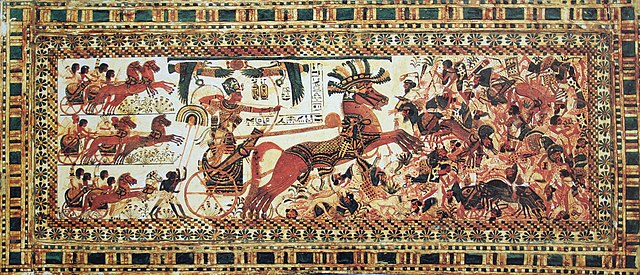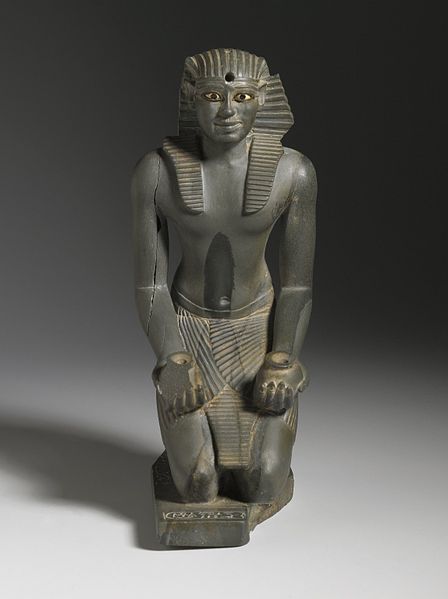Military of ancient Egypt
Ancient Egypt was an ancient civilization of eastern North Africa, concentrated along the northern reaches of the Nile River in Egypt. The civilization coalesced around 3150 BC with the political unification of Upper and Lower Egypt under the first pharaoh, and it developed over the next three millennia. Its history occurred in a series of stable kingdoms, separated by periods of relative instability known as intermediate periods. Ancient Egypt reached its pinnacle during the New Kingdom, after which it entered a period of slow decline. Egypt was conquered by a succession of foreign powers in the late period, and the rule of the pharaohs officially ended in 31 BC, when the early Roman Empire conquered Egypt and made it a province. Although the Egyptian military forces in the Old and Middle kingdoms were well maintained, the new form that emerged in the New Kingdom showed the state becoming more organized to serve its needs.
Ancient Egyptian War Wheels
The Hyksos of Ancient Egypt drove chariots.
A New Kingdom khopesh
Tutankhamun depicted in a triumphant battle against Asiatic enemies
Pharaoh is the vernacular term often used for the monarchs of ancient Egypt, who ruled from the First Dynasty until the annexation of Egypt by the Roman Republic in 30 BCE. However, regardless of gender, "king" was the term used most frequently by the ancient Egyptians for their monarchs through the middle of the Eighteenth Dynasty during the New Kingdom. The earliest confirmed instances of "pharaoh" used contemporaneously for a ruler were a letter to Akhenaten or an inscription possibly referring to Thutmose III.
The Mask of Tutankhamun from tomb KV62 in the Valley of the Kings. Pharaohs' tombs were provided with vast quantities of wealth
A guardian statue wearing the red crown which reflected the facial features of the reigning king, probably Amenemhat II or Senwosret II, and which functioned as a divine guardian for the imiut. Made of cedar wood and plaster c. 1919–1885 BCE
Uraeus depicted on king Den, ivory label found at his tomb in Abydos, c. 3000 BCE, British Museum, London
Statuette of Pepy I (c. 2338-2298 BCE) wearing a nemes headdress Brooklyn Museum, New York








